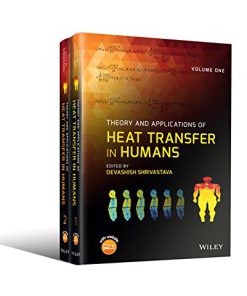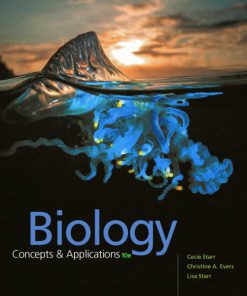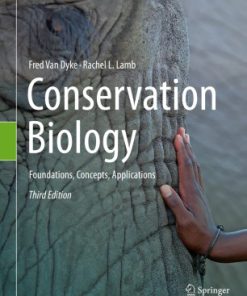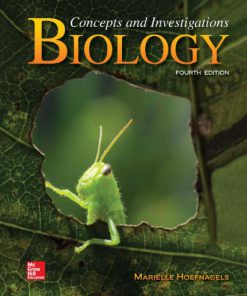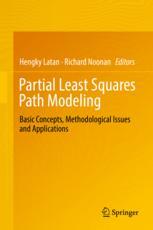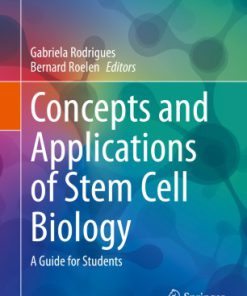Biology of Humans Concepts Applications and Issues 6th Edition by Judith Goodenough, Betty McGuire 0134045440 9780134045443
$50.00 Original price was: $50.00.$25.00Current price is: $25.00.
Biology of Humans Concepts Applications and Issues 6th Edition by Judith Goodenough, Betty A. McGuire – Ebook PDF Instant Download/DeliveryISBN: 0134045440, 9780134045443
Full download Biology of Humans Concepts Applications and Issues 6th Edition after payment.
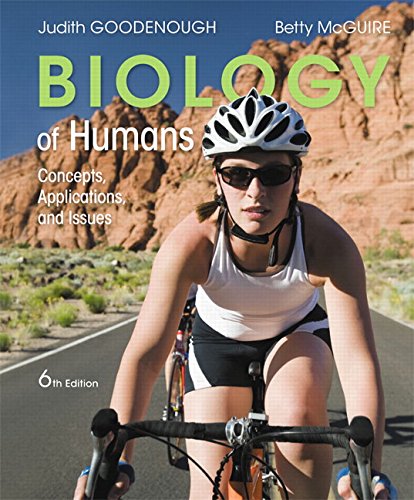
Product details:
ISBN-10 : 0134045440
ISBN-13 : 9780134045443
Author: Judith Goodenough, Betty A. McGuire
Known for its unique “Special Topic” chapters and emphasis on everyday health concerns, the 6th Edition of Biology of Humans: Concepts, Applications, and Issues continues to personalize the study of human biology using a conversational writing style, vibrant, easy-to-follow illustrations, abundant applications, and a new emphasis on developing everyday science literacy skills.
The authors provide a practical, friendly introduction to the study of the human body, preparing students to navigate today’s rapidly expanding and evolving world of health information.
Biology of Humans Concepts Applications and Issues 6th Table of contents:
Part I The Organization of the Body
1 Humans in the World of Biology
1.1 Basic Characteristics of All Living Things
1.2 Evolution: A Unifying Theme in Biology
1.3 Levels of Biological Organization
1.4 Scientific Method
Inductive and Deductive Reasoning
Clinical Trials
Epidemiological Studies
1.5 Critical Thinking to Evaluate Scientific Claims
Chapter Review
Highlighting the Concepts
1.1 Basic Characteristics of All Living Things (pp. 1–4)
1.2 Evolution: A Unifying Theme in Biology (pp. 4–5)
1.3 Levels of Biological Organization (pp. 5–6)
1.4 Scientific Method (pp. 6–10)
1.5 Critical Thinking to Evaluate Scientific Claims (pp. 10–11)
Recognizing Key Terms
Reviewing the Concepts
Applying the Concepts
Finding and Evaluating Information
Special Topic 1a Becoming a Patient: A Major Decision
1a.1 Young Adults and Health Care
1a.2 Selecting a Primary Care Physician
Responsibilities of Primary Care Physicians
Primary Care Physician Settings
Evaluating Primary Care Physicians
1a.3 Getting the Most Out of an Appointment with Your Doctor
Preparing for an Appointment
What to Expect during an Appointment
Understanding Medications
1a.4 Finding a Specialist and Getting a Second Opinion
1a.5 Appointing a Health Care Agent
1a.6 Selecting a Hospital and Staying Safe
Accreditation Status
Extent of Experience and Treatment Success
Preventing Medical Errors
1a.7 Researching Health Conditions on Your Own
2 Chemistry Comes to Life
2.1 The Nature of Atoms
Elements
Isotopes and Radioisotopes
2.2 Chemical Bonds and Compounds
Covalent Bonds
Ionic Bonds
2.3 The Role of Water in Life
Polarity and Hydrogen Bonds
Properties of Water
Acids and Bases
The pH Scale
Buffers
2.4 Major Molecules of Life
Carbohydrates
Monosaccharides
Oligosaccharides
Polysaccharides
Lipids
Triglycerides
Phospholipids
Steroids
Proteins
Amino acids
Protein structure
Enzymes
Nucleic Acids and Nucleotides
Nucleotides
DNA and RNA
ATP
Chapter Review
Highlighting the Concepts
2.1 The Nature of Atoms (pp. 21–24)
2.2 Chemical Bonds and Compounds (pp. 24–26)
2.3 The Role of Water in Life (pp. 26–30)
2.4 Major Molecules of Life (pp. 31–39)
Recognizing Key Terms
Reviewing the Concepts
Applying the Concepts
Finding and Evaluating Information
The Vitamin Myth: Why We Think We Need Supplements
3 The Cell
3.1 Eukaryotic Cells Compared with Prokaryotic Cells
3.2 Cell Size and Microscopy
3.3 Cell Structure and Function
3.4 Plasma Membrane
Plasma Membrane Structure
Plasma Membrane Functions
Movement across the Plasma Membrane
Simple diffusion
Facilitated diffusion
Osmosis
Active transport
Endocytosis
Exocytosis
3.5 Organelles
Nucleus
Endoplasmic Reticulum
Golgi Complex
Lysosomes
Mitochondria
3.6 Cytoskeleton
3.7 Cellular Respiration and Fermentation in the Generation of ATP
Cellular Respiration
Glycolysis
Transition reaction
Citric acid cycle
Electron transport chain
Fermentation
Chapter Review
Highlighting the Concepts
3.1 Eukaryotic Cells Compared with Prokaryotic Cells (pp. 43–45)
3.2 Cell Size and Microscopy (pp. 45–46)
3.3 Cell Structure and Function (p. 46)
3.4 Plasma Membrane (pp. 46–50)
3.5 Organelles (pp. 51–55)
3.6 Cytoskeleton (pp. 56–57)
3.7 Cellular Respiration and Fermentation in the Generation of ATP (pp. 57–61)
Recognizing Key Terms
Reviewing the Concepts
Applying the Concepts
Finding and Evaluating Information
4 Body Organization and Homeostasis
4.1 From Cells to Organ Systems
Tissues
Epithelial tissue
Connective tissue
Connective tissue proper
Specialized connective tissue
Muscle tissue
Nervous tissue
Cell Junctions
Organs and Organ Systems
Body Cavities Lined with Membranes
4.2 Skin: An Organ System
Skin Functions
Skin Layers
The epidermis
The dermis
The hypodermis
Skin Color
Hair, Nails, and Glands
Hair
Nails
Glands
4.3 Homeostasis
Negative Feedback Mechanisms
Hypothalamus and Body Temperature
Chapter Review
Highlighting the Concepts
4.1 From Cells to Organ Systems (pp. 65–73)
4.2 Skin: An Organ System (pp. 73–78)
4.3 Homeostasis (pp. 79–81)
Recognizing Key Terms
Reviewing the Concepts
Applying the Concepts
Finding and Evaluating Information
Part II Control and Coordination of the Body
5 The Skeletal System
5.1 Bone Functions
5.2 Bone Structure
5.3 Bone as a Living Tissue
Cartilage Model
Hormones and Bone Growth
5.4 The Role of Fibroblasts and Osteoblasts in Repairing Bone Fractures
5.5 Bone Remodeling
5.6 Axial Skeleton
Skull
The cranial bones
Facial bones
Vertebral Column
Rib Cage
5.7 Appendicular Skeleton
Pectoral Girdle
Pelvic Girdle
5.8 Joints
Synovial Joints
Damage to Joints
Arthritis
Chapter Review
Highlighting the Concepts
5.1 Bone Functions (p. 86)
5.2 Bone Structure (p. 87)
5.3 Bone as a Living Tissue (pp. 88–89)
5.4 The Role of Fibroblasts and Osteoblasts in Repairing Bone Fractures (pp. 89–90)
5.5 Bone Remodeling (pp. 90–91)
5.6 Axial Skeleton (pp. 91–94)
5.7 Appendicular Skeleton (pp. 94–95)
5.8 Joints (pp. 95–98)
Recognizing Key Terms
Reviewing the Concepts
Applying the Concepts
Finding and Evaluating Information
6 The Muscular System
6.1 Function and Characteristics of Muscles
6.2 Skeletal Muscles Working in Pairs
6.3 Contraction of Muscles
Sliding Filament Model
Calcium Ions and Regulatory Proteins
Role of Nerves
Muscular Dystrophy
6.4 Voluntary Movement
Motor Units and Recruitment
Muscle Twitches, Summation, and Tetanus
6.5 Energy for Muscle Contraction
6.6 Slow-Twitch and Fast-Twitch Muscle Cells
6.7 Building Muscle
Chapter Review
Highlighting the Concepts
6.1 Function and Characteristics of Muscles (pp. 101–102)
6.2 Skeletal Muscles Working in Pairs (p. 102)
6.3 Contraction of Muscles (pp. 102–107)
6.4 Voluntary Movement (pp. 107–108)
6.5 Energy for Muscle Contraction (pp. 108–109)
6.6 Slow-Twitch and Fast-Twitch Muscle Cells (pp. 109–110)
6.7 Building Muscle (pp. 110–112)
Recognizing Key Terms
Reviewing the Concepts
Applying the Concepts
Finding and Evaluating Information
7 Neurons: The Matter of the Mind
7.1 Cells of the Nervous System
Neuroglial Cells
Neurons
7.2 Structure of Neurons
Axons and Dendrites
Myelin Sheath
7.3 Nerve Impulses
Plasma Membrane of a Neuron
Resting Potential
Action Potential
7.4 Synaptic Transmission
Release of the Neurotransmitter and the Opening of Ion Channels
Summation of Input from Excitatory and Inhibitory Synapses
Removal of Neurotransmitter
Roles of Different Neurotransmitters
Chapter Review
Highlighting the Concepts
7.1 Cells of the Nervous System (pp. 115–116)
7.2 Structure of Neurons (pp. 116–118)
7.3 Nerve Impulses (pp. 118–120)
7.4 Synaptic Transmission (pp. 120–124)
Recognizing Key Terms
Reviewing the Concepts
Applying the Concepts
Finding and Evaluating Information
8 The Nervous System
8.1 Organization of the Nervous System
8.2 The Central Nervous System
Protection of the Central Nervous System
The meninges
Cerebrospinal fluid
The blood–brain barrier
Brain: Command Center
Cerebrum
Sensory areas
Motor areas
Association areas
Thalamus
Hypothalamus
Cerebellum
Brain stem
Limbic system
Reticular activating system
Spinal Cord: Message Transmission and Reflex Center
8.3 The Peripheral Nervous System
Somatic Nervous System
Autonomic Nervous System
8.4 Disorders of the Nervous System
Headaches
Strokes
Coma
Spinal Cord Injury
Chapter Review
Highlighting the Concepts
8.1 Organization of the Nervous System (pp. 127–128)
8.2 The Central Nervous System (pp. 128–136)
8.3 The Peripheral Nervous System (pp. 137–138)
8.4 Disorders of the Nervous System (pp. 139–140)
Recognizing Key Terms
Reviewing the Concepts
Applying the Concepts
Finding and Evaluating Information
Special Topic 8a Drugs and the Mind
8a.1 Psychoactive Drugs and Communication between Neurons
8a.2 Drug Dependence
8a.3 Alcohol
Absorption and Distribution
Rate of Elimination
Health-Related Effects
Nervous system
Liver
Cancer
Heart and blood vessels
Alcoholism
8a.4 Marijuana
THC Receptors in the Brain
Health-Related Effects of Long-Term Use
Legalized Marijuana
8a.5 Stimulants
Cocaine
Cardiovascular risks
Respiratory risks
Amphetamines
Nicotine
8a.6 Hallucinogens
8a.7 Opiates
Prescription Painkillers
Heroin
9 Sensory Systems
9.1 Sensory Receptors
9.2 Classes of Receptors
9.3 The General Senses
Touch, Pressure, and Vibration
Temperature Change
Body and Limb Position
Pain
9.4 Vision
Wall of the Eyeball
Fluid-Filled Chambers
Focusing and Sharp Vision
Cataracts
Focusing problems
Light and Pigment Molecules
Rods: Vision in Dim Light
Cones: Color Vision
9.5 Hearing
Form and Function of the Ear
Loudness and Pitch of Sound
Hearing Loss
Ear Infections
9.6 Balance and the Vestibular Apparatus of the Inner Ear
9.7 Smell and Taste
Chapter Review
Highlighting the Concepts
9.1 Sensory Receptors (pp. 151–152)
9.2 Classes of Receptors (p. 152)
9.3 The General Senses (pp. 152–154)
9.4 Vision (pp. 154–159)
9.5 Hearing (pp. 159–164)
9.6 Balance and the Vestibular Apparatus of the Inner Ear (pp. 164–166)
9.7 Smell and Taste (pp. 166–168)
Recognizing Key Terms
Reviewing the Concepts
Applying the Concepts
Finding and Evaluating Information
10 The Endocrine System
10.1 Functions and Mechanisms of Hormones
Hormones as Chemical Messengers
Feedback Mechanisms and Secretion of Hormones
Interactions between Hormones
10.2 Hypothalamus and Pituitary Gland
Anterior Lobe
Posterior Lobe
10.3 Thyroid Gland
10.4 Parathyroid Glands
10.5 Adrenal Glands
Adrenal Cortex
Adrenal Medulla
10.6 Pancreas
10.7 Thymus Gland
10.8 Pineal Gland
10.9 Locally Acting Chemical Messengers
Chapter Review
Highlighting the Concepts
10.1 Functions and Mechanisms of Hormones (pp. 171–175)
10.2 Hypothalamus and Pituitary Gland (pp. 175–180)
10.3 Thyroid Gland (pp. 180–182)
10.4 Parathyroid Glands (pp. 182–183)
10.5 Adrenal Glands (pp. 183–185)
10.6 Pancreas (p. 185)
10.7 Thymus Gland (p. 185)
10.8 Pineal Gland (pp. 185–186)
10.9 Locally Acting Chemical Messengers (pp. 186–187)
Recognizing Key Terms
Reviewing the Concepts
Applying the Concepts
Finding and Evaluating Information
Special Topic 10a Diabetes Mellitus
10a.1 General Characterization and Overall Prevalence
10a.2 Type 1 and Type 2 Diabetes
Characterization and Risk Factors
Symptoms and Complications
Diagnosis
Treatments
Lifestyle Changes and Key Recommendations after Diagnosis
Prognoses
10a.3 Gestational Diabetes
Part III Maintenance of the Body
11 Blood
11.1 Functions of Blood
11.2 Composition of Blood
Plasma
Formed Elements
Red blood cells and transport of oxygen
Red blood cells and hemoglobin
Life cycle of red blood cells
White blood cells and defense against disease
Granulocytes
Agranulocytes
Platelets
11.3 Blood Cell Disorders
Disorders of Red Blood Cells
Disorders of White Blood Cells
11.4 Blood Types
ABO Blood Types
Rh Factor
Blood Donation
11.5 Blood Clotting
Chapter Review
Highlighting the Concepts
11.1 Functions of Blood (p. 198)
11.2 Composition of Blood (pp. 199–204)
11.3 Blood Cell Disorders (pp. 204–206)
11.4 Blood Types (pp. 206–208)
11.5 Blood Clotting (pp. 208–209)
Recognizing Key Terms
Reviewing the Concepts
Applying the Concepts
Finding and Evaluating Information
12 The Cardiovascular and Lymphatic Systems
12.1 Cardiovascular System
12.2 Blood Vessels
Arteries
Capillaries
Veins
12.3 Heart
Two Circuits of Blood Flow
The pulmonary circuit
The systemic circuit
Coronary circulation
Cardiac Cycle
Internal Conduction System
Electrocardiogram
12.4 Blood Pressure
12.5 Lymphatic System
Chapter Review
Highlighting the Concepts
12.1 Cardiovascular System (p. 213)
12.2 Blood Vessels (pp. 213–219)
12.3 Heart (pp. 219–224)
12.4 Blood Pressure (pp. 224–225)
12.5 Lymphatic System (pp. 225–229)
Recognizing Key Terms
Reviewing the Concepts
Applying the Concepts
Finding and Evaluating Information
Special Topic 12a Cardiovascular Disease
12a.1 The Prevalence of Cardiovascular Disease
12a.2 Blood Clots
12a.3 Problems with Blood Vessels
High Blood Pressure
Aneurysm
Atherosclerosis
12a.4 Heart Attack and Heart Failure
12a.5 Cardiovascular Disease and Cigarette Smoking
12a.6 Preventing Cardiovascular Disease
13 Body Defense Mechanisms
13.1 The Body’s Defense System
13.2 Three Lines of Defense
First Line of Innate Defense: Physical and Chemical Barriers
Physical barriers
Chemical barriers
Second Line of Innate Defense: Defensive Cells and Proteins, Inflammation, and Fever
Defensive cells
Natural killer cells
Defensive proteins
Interferons
Complement system
Inflammation
Fever
Third Line of Defense: Adaptive Immune Response
13.3 Distinguishing Self from Nonself
13.4 Antibody-Mediated Responses and Cell-Mediated Responses
13.5 Steps of the Adaptive Immune Response
13.6 Active and Passive Immunity
13.7 Monoclonal Antibodies
13.8 Problems of the Immune System
Autoimmune Disorders
Allergies
Chapter Review
Highlighting the Concepts
13.1 The Body’s Defense System (p. 239)
13.2 Three Lines of Defense (pp. 240–245)
13.3 Distinguishing Self from Nonself (p. 245)
13.4 Antibody-Mediated Responses and Cell-Mediated Responses (pp. 245–246)
13.5 Steps of the Adaptive Immune Response (pp. 246–250)
13.6 Active and Passive Immunity (pp. 251–252)
13.7 Monoclonal Antibodies (p. 252)
13.8 Problems of the Immune System (pp. 252–255)
Recognizing Key Terms
Reviewing the Concepts
Applying the Concepts
Finding and Evaluating Information
Special Topic 13a Infectious Disease
13a.1 Pathogens
Bacteria
Beneficial bacteria
Bacterial enzymes and toxins
Antibiotics
Viruses
Protozoans
Fungi
Parasitic Worms
Prions
13a.2 Spread of a Disease
13a.3 Infectious Diseases as a Continued Threat
Emerging Diseases and Reemerging Diseases
Global Trends in Emerging Infectious Diseases
Epidemiology
14 The Respiratory System
14.1 Structures of the Respiratory System
Nose
Sinuses
Pharynx
Larynx
Trachea
Bronchial Tree
Alveoli
Lungs
14.2 Mechanism of Breathing
Inhalation
Exhalation
The Volume of Air Moved into or out of the Lungs during Breathing
14.3 Transport of Gases between the Lungs and the Cells
Oxygen Transport and Hemoglobin
Carbon Dioxide Transport and Bicarbonate Ions
14.4 Respiratory Centers in the Brain
Basic Breathing Pattern
Chemoreceptors
Carbon dioxide
Oxygen
14.5 Respiratory Disorders
Common Cold
Flu
Pneumonia
Strep Throat
Tuberculosis
Cystic Fibrosis
Chronic Obstructive Pulmonary Disease (COPD)
Bronchitis
Emphysema
Lung Cancer
Chapter Review
Highlighting the Concepts
14.1 Structures of the Respiratory System (pp. 268–274)
14.2 Mechanism of Breathing (pp. 274–276)
14.3 Transport of Gases between the Lungs and the Cells (pp. 276–278)
14.4 Respiratory Centers in the Brain (pp. 278–279)
14.5 Respiratory Disorders (pp. 279–283)
Recognizing Key Terms
Reviewing the Concepts
Applying the Concepts
Finding and Evaluating Information
15 The Digestive System and Nutrition
15.1 The Gastrointestinal Tract
15.2 Specialized Compartments for Food Processing
Mouth
Teeth and mechanical digestion
Salivary glands and chemical digestion
Tongue: Taste and food manipulation
Pharynx
Esophagus
Stomach
Storage of food and regulation of the release of food to the small intestine
Liquefaction of food
Initial chemical digestion of proteins
Small Intestine
Chemical digestion within the small intestine
Structure of the small intestine
Accessory Organs: Pancreas, Liver, and Gallbladder
Pancreas
Liver
Gallbladder
Large Intestine
Regions of the large intestine
Disorders of the colon
15.3 Nerves and Hormones in Digestion
15.4 Planning a Healthy Diet
15.5 Nutrients
Lipids
Carbohydrates
Proteins
Vitamins
Minerals
Water
15.6 Food Labels
15.7 Energy Balance
15.8 Eating Disorders
Chapter Review
Highlighting the Concepts
15.1 The Gastrointestinal Tract (pp. 286–287)
15.2 Specialized Compartments for Food Processing (pp. 287–298)
15.3 Nerves and Hormones in Digestion (pp. 298–299)
15.4 Planning a Healthy Diet (pp. 299–300)
15.5 Nutrients (pp. 300–306)
15.6 Food Labels (pp. 306–307)
15.7 Energy Balance (p. 307)
15.8 Eating Disorders (pp. 307–308)
Recognizing Key Terms
Reviewing the Concepts
Applying the Concepts
Finding and Evaluating Information
Special Topic 15a The Obesity Epidemic
15a.1 What Is Obesity?
Body Mass Index
15a.2 Health Risks of Obesity
15a.3 Regulation of Food Intake
15a.4 Weight Management
16 The Urinary System
16.1 Eliminating Waste
16.2 Components of the Urinary System
16.3 Kidneys and Homeostasis
Structure of the Kidneys
Nephrons
Structure of nephrons
Functions of nephrons
Acid–Base Balance
Water Conservation
Hormones and Kidney Function
Red Blood Cells and Vitamin D
16.4 Dialysis and Transplant Surgery
Dialysis
Kidney Transplant Surgery
16.5 Urination
16.6 Urinary Tract Infections
Chapter Review
Highlighting the Concepts
16.1 Eliminating Waste (pp. 317–318)
16.2 Components of the Urinary System (p. 318)
16.3 Kidneys and Homeostasis (pp. 318–328)
16.4 Dialysis and Transplant Surgery (pp. 328–330)
16.5 Urination (pp. 330–332)
16.6 Urinary Tract Infections (p. 332)
Recognizing Key Terms
Reviewing the Concepts
Applying the Concepts
Finding and Evaluating Information
Part IV Reproduction and Development
17 Reproductive Systems
17.1 Gonads
17.2 Male and Female Reproductive Roles
17.3 Form and Function of the Male Reproductive System
Testes
Duct System
Accessory Glands
Penis
Sperm Development
Hormones
17.4 Form and Function of the Female Reproductive System
Ovaries
Oviducts
Uterus
External Genitalia
Breasts
Ovarian Cycle
Coordination of the Ovarian and Uterine Cycles
Menstruation
Endometrium thickens
Ovulation and formation of corpus luteum (in ovary)
Endometrium further prepared for implantation
Corpus luteum degenerates
Menstruation begins again
Menopause
17.5 Disorders of the Female Reproductive System
17.6 Stages of the Human Sexual Response
17.7 Birth Control
Abstinence
Sterilization
Hormonal Contraception
Combination estrogen and progesterone contraception
Progesterone-only contraception
Intrauterine Devices
Barrier Methods
Spermicidal Preparations
Fertility Awareness
Emergency Contraception
Chapter Review
Highlighting the Concepts
17.1 Gonads (p. 336)
17.2 Male and Female Reproductive Roles (pp. 336–337)
17.3 Form and Function of the Male Reproductive System (pp. 337–341)
17.4 Form and Function of the Female Reproductive System (pp. 342–347)
17.5 Disorders of the Female Reproductive System (pp. 347–348)
17.6 Stages of the Human Sexual Response (pp. 349–350)
17.7 Birth Control (pp. 350–352)
Recognizing Key Terms
Reviewing the Concepts
Applying the Concepts
Finding and Evaluating Information
Special Topic 17a Sexually Transmitted Diseases and AIDS
17a.1 Long-Lasting Effects of STDs and STIs
17a.2 STDs Caused by Bacteria
Chlamydia and Gonorrhea
Syphilis
17a.3 STDs Caused by Viruses
Genital Herpes
HPV and Genital Warts
17a.4 HIV/AIDS
Global Pandemic
Form of HIV
Replication of HIV and Implications for Treatment
Transmission of HIV
Sites of HIV Infection
Stages of HIV Infection
Initial infection
Asymptomatic stage
Initial disease symptoms
Early immune failure
AIDS
Treatments
18 Development throughout Life
18.1 Periods of Development in Human Life
18.2 Prenatal Period
Pre-embryonic Period
Fertilization
Cleavage
Implantation
Extraembryonic membranes
The placenta
Embryonic Period
Gastrulation
Development of the central nervous system
Development of the reproductive system
Fetal Period
Growth
Fetal circulation
18.3 Birth
18.4 Birth Defects
18.5 Milk Production by Mammary Glands
18.6 Postnatal Period
Possible Causes of Aging
Cessation of cell division
Damage to DNA and other macromolecules
High-Quality Old Age
Chapter Review
Highlighting the Concepts
18.1 Periods of Development in Human Life (p. 366)
18.2 Prenatal Period (pp. 366–376)
18.3 Birth (pp. 376–378)
18.4 Birth Defects (pp. 378–380)
18.5 Milk Production by Mammary Glands (p. 380)
18.6 Postnatal Period (pp. 380–383)
Recognizing Key Terms
Reviewing the Concepts
Applying the Concepts
Finding and Evaluating Information
Special Topic 18a Autism Spectrum Disorder
18a.1 Characterization and Prevalence
18a.2 Diagnosis
18a.3 Possible Causes
18a.4 Treatment and Therapy
18a.5 Fear That Vaccines Cause Autism Spectrum Disorder
Part V Genes and DNA
19 Chromosomes and Cell Division
19.1 Two Types of Cell Division
19.2 Form of Chromosomes
19.3 The Cell Cycle
Interphase
Division of the Nucleus and the Cytoplasm
19.4 Mitosis: Creation of Genetically Identical Diploid Body Cells
19.5 Cytokinesis
19.6 Karyotypes
19.7 Meiosis: Creation of Haploid Gametes
Functions of Meiosis
Two Meiotic Cell Divisions: Preparation for Sexual Reproduction
Meiosis I
Meiosis II
Genetic Variability: Crossing Over and Independent Assortment
Extra or Missing Chromosomes
Chapter Review
Highlighting the Concepts
19.1 Two Types of Cell Division (pp. 394–395)
19.2 Form of Chromosomes (p. 395)
19.3 The Cell Cycle (pp. 395–396)
19.4 Mitosis: Creation of Genetically Identical Diploid Body Cells (pp. 396–398)
19.5 Cytokinesis (pp. 398–399)
19.6 Karyotypes (p. 400)
19.7 Meiosis: Creation of Haploid Gametes (pp. 400–408)
Recognizing Key Terms
Reviewing the Concepts
Applying the Concepts
Finding and Evaluating Information
Special Topic 19a Stem Cells—A Repair Kit for the Body
19a.1 Stem Cells: Unspecialized Cells
19a.2 Sources of Human Stem Cells
Adult Stem Cells: Unipotent and Multipotent
Umbilical Cord and Placental Stem Cells: Multipotent
Embryonic Stem Cells: Pluripotent
Unused embryos from fertility clinics
Somatic cell nuclear transfer
Induced Pluripotent Stem Cells
19a.3 Potential Uses for Stem Cells
Replacement for Damaged Cells
Growing New Organs
Testing New Drugs
20 Genetics and Human Inheritance
20.1 Principles of Inheritance
Gamete Formation
Mendelian Genetics
One-trait crosses
Two-trait crosses
Pedigrees
Dominant and Recessive Alleles
Codominant Alleles
Incomplete Dominance
Pleiotropy
Multiple Alleles
Polygenic Inheritance
Genes on the Same Chromosome
Sex-Linked Genes
Sex-Influenced Genes
20.2 Breaks in Chromosomes
20.3 Detecting Genetic Disorders
Prenatal Genetic Testing
Newborn Genetic Testing
Adult Genetic Testing
Chapter Review
Highlighting the Concepts
20.1 Principles of Inheritance pp. 419–430)
20.2 Breaks in Chromosomes (p. 430)
20.3 Detecting Genetic Disorders (pp. 431–432)
Recognizing Key Terms
Reviewing the Concepts
Applying the Concepts
Finding and Evaluating Information
21 DNA and Biotechnology
21.1 Form of DNA
21.2 Replication of DNA
21.3 Gene Expression
RNA Synthesis
Protein Synthesis
The genetic code
Transfer RNA
Ribosomes
Protein synthesis
21.4 Mutations
21.5 Epigenetics: Regulating Gene Activity
Gene Activity at the Chromosome Level
Regulating the Transcription of Genes
21.6 Genetic Engineering
Recombinant DNA
Cloning
Polymerase chain reaction (PCR)
Applications of Genetic Engineering
Environmental applications
Livestock
Pharmaceuticals
Agriculture
Gene Therapy
Methods of delivering a healthy gene
Gene therapy results
21.7 Genomics
Human Genome Project
The Epigenome
Microarray Analysis
Comparison of Genomes of Different Species
Chapter Review
Highlighting the Concepts
21.1 Form of DNA (pp. 436–437)
21.2 Replication of DNA (pp. 437–438)
21.3 Gene Expression (pp. 438–443)
21.4 Mutations (pp. 443–444)
21.5 Epigenetics: Regulating Gene Activity (p. 444)
21.6 Genetic Engineering (pp. 444–449)
21.7 Genomics (pp. 449–453)
Recognizing Key Terms
Reviewing the Concepts
Applying the Concepts
Finding and Evaluating Information
Special Topic 21a Cancer
21a.1 Uncontrolled Cell Division
Benign or Malignant Tumors
Stages of Cancer Development
21a.2 Development of Cancer
Lack of Restraint on Cell Division
DNA Damage and Cell Destruction
Unlimited Cell Division
Blood Supply to Cancer Cells
Adherence to Neighboring Cells
Body Defense Cells
21a.3 Multiple Mutations
21a.4 Cancer and Epigenomics
21a.5 Cancer Stem Cell Hypothesis
21a.6 Known Causes of Cancer
Viruses
Chemicals
Radiation
21a.7 Reducing the Risk of Cancer
21a.8 Diagnosing Cancer
21a.9 Treating Cancer
Surgery
Radiation
Chemotherapy
Targeted Cancer Treatment
Immunotherapy
Inhibition of Blood Vessel Formation
Gene Therapy
Part VI Evolution and Ecology
22 Evolution and Our Heritage
22.1 Evolution of Life on Earth
Small Organic Molecules
Macromolecules
Early Cells
22.2 Scale of Evolutionary Change
Microevolution
Genetic drift
Gene flow
Mutation
Natural selection
Macroevolution
Scientific names
Phylogenetic trees
22.3 Evidence of Evolution
Fossil Record
Geographic Distributions
Comparative Molecular Biology
Comparative Anatomy and Embryology
22.4 Human Evolution
Primate Characteristics
Comparison of human and chimp skeletal anatomy
Misconceptions
Trends in Hominin Evolution
Australopithecines
Homo habilis
Homo ergaster and Homo erectus
Homo heidelbergensis, Homo sapiens, and Homo neanderthalensis
Chapter Review
Highlighting the Concepts
22.1 Evolution of Life on Earth (pp. 470–472)
22.2 Scale of Evolutionary Change (pp. 472–476)
22.3 Evidence of Evolution (pp. 476–481)
22.4 Human Evolution (pp. 481–488)
Recognizing Key Terms
Reviewing the Concepts
Applying the Concepts
Finding and Evaluating Information
23 Ecology, the Environment, and Us
23.1 Earth as an Ecosystem
23.2 Biosphere
23.3 Ecological Succession
23.4 Energy Flow
Food Chains and Food Webs
Energy Transfer through Trophic Levels
Ecological Pyramids
Health and Environmental Consequences of Ecological Pyramids
Biological magnification
World hunger
23.5 Chemical Cycles
The Water Cycle
Human activities and the water cycle
The Carbon Cycle
Increasing carbon dioxide levels
The Nitrogen Cycle
Human activities and the nitrogen cycle
The Phosphorus Cycle
Eutrophication
23.6 Biodiversity
Causes for Loss of Biodiversity
The Importance of Biodiversity
Genetic diversity
Medicines
Ecosystem functions
Chapter Review
Highlighting the Concepts
23.1 Earth as an Ecosystem (p. 491)
23.2 Biosphere (p. 492)
23.3 Ecological Succession (pp. 492–494)
23.4 Energy Flow (pp. 494–498)
23.5 Chemical Cycles (pp. 498–502)
23.6 Biodiversity (pp. 502–505)
Recognizing Key Terms
Reviewing the Concepts
Applying the Concepts
Finding and Evaluation Information
People also search for Biology of Humans Concepts Applications and Issues 6th:
biology of humans concepts applications and issues 6th edition
biology of humans concepts applications and issues 6th edition pdf
biology of humans concepts applications and issues pdf
biology of humans concepts applications and issues goodenough 6th edition
biology of humans concepts applications and issues 6th edition ebook
Tags: Humans Concepts, Applications, Issues, Judith Goodenough, Betty McGuire
You may also like…
Biology and other natural sciences
Theory and Applications of Heat Transfer in Humans 1st Edition Devashish Shrivastava
Biology and other natural sciences - Biology
Biology and other natural sciences
Conservation Biology Foundations Concepts Applications Fred Van Dyke
Biology and other natural sciences - Biology
Nature of Biology 1 VCE Units 1 & 2 5th Edition Judith Kinnear
Biology and other natural sciences - Biology
Politics & Philosophy - Social Sciences
Theories of development : concepts and applications 6th Edition William Crain
Computers - Programming
Biology and other natural sciences - Molecular




